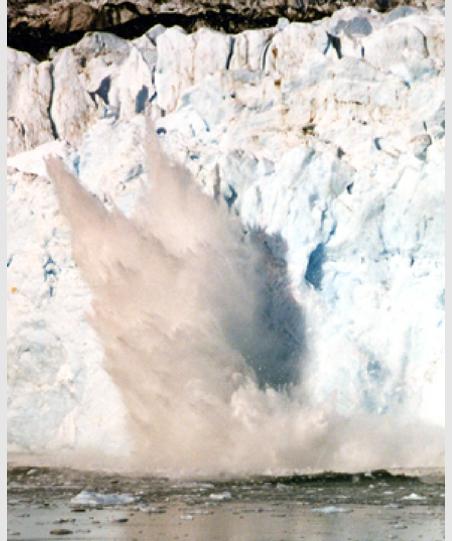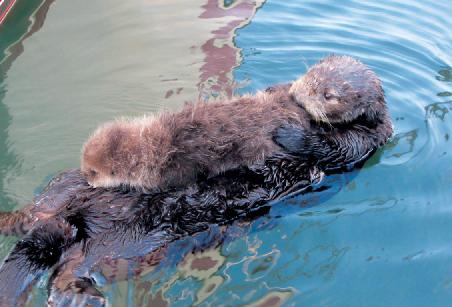 |
|
Mile 1500 - College Fjord |
|
 |
||
Harvard Glacier, at the head of College Fjord. is a true river of ice. |
||
The hidden jewel of Prince William Sound is remote College Fjord. Within an eight-mile stretch at the upper end of this fjord five major tidewater glaciers reach the salt water. While Glacier Bay has emerged from the ice so recently that substantial trees have not gained foothold close to the ice, College Fjord is a place where the forests and glaciers have coexisted for centuries. The result is a perspective on the great rivers of ice not seen in Glacier Bay. To see a glacier towering above the 100-foot-tall trees of a spruce forest, like Wellesley Glacier, is really impressive. Study the hillsides here. The upper slopes of these big glacial fjords, stripped of trees and covered with many berry bushes, are excellent bear watching territory. What you are looking for are brown or black dots that appear to be moving—these will be bears foraging for berries. Look also for white dots, often found in small groups—these will be mountain goats. You will see goats in places that an experienced rock climber would probably have trouble on. Bears are also found down on the beach, especially if the tide is low. They are pretty good clammers, despite a crude technique. It goes like this: they look for the telltale water spurts of clams, dig them up with a big paw, smash them open with their other paw, and press the whole mass, shells and all, up to their mouth. So where are the really big icebergs? By the time most of this ice gets to the salt water, it has been fractured so much by those twisting mountain valleys, that most of the ice that breaks off is fairly small, say the size of a small apartment building at the most. Remember that roughly 7/8 of an iceberg is below the surface of the water, so that something that looks small on top, like the size of a garage, still poses a significant danger to ships. Small icebergs and so-called “bergy bits” are notoriously difficult to see on radar. Calving bergs: before Alaska cruising got so popular, few big ships penetrated right up close to the glaciers here and in other places. The captains of those ships discovered that if the glacier wasn’t actively calving when they were there, they could often dislodge some ice with a blow of the ship’s steam whistle. Today such practices are prohibited, so it’s just a waiting game. Often major calving is proceeded by small bits breaking off. I was here aboard the Dawn Princess in 1997, and the captain spied an apartment building-sized ice spire that seemed to be tipping toward the fjord. We circled slowly for more than an hour, watching and waiting, and were finally rewarded with a splash that must have been 280 feet high and a huge boom that echoed up and down the fjord. |
 |
|||||||||
This splash was caused by an ice spire the size of an apartment building toppling into College Fjord. This splash is easily several hundred feet high - if you see something like this, consider yourself lucky! |
||||||||||
 |
||||||||||
"Griz," - a fine looking brown bear having a nice breakfast of fresh mussels. |
||||||||||
 |
||||||||||
Female sea otter preening her baby. Shortly before this photo was taken, the mother pushed the baby into the water to see if she could swim - she could, but just barely. |
||||||||||